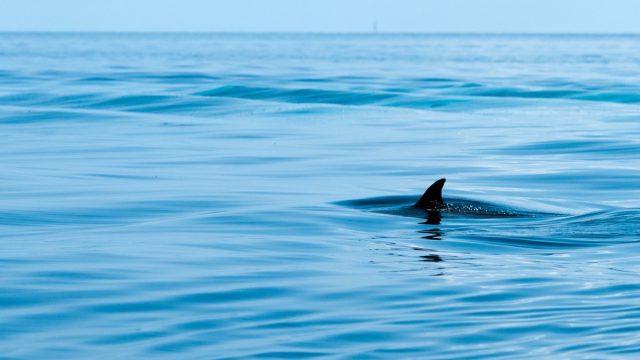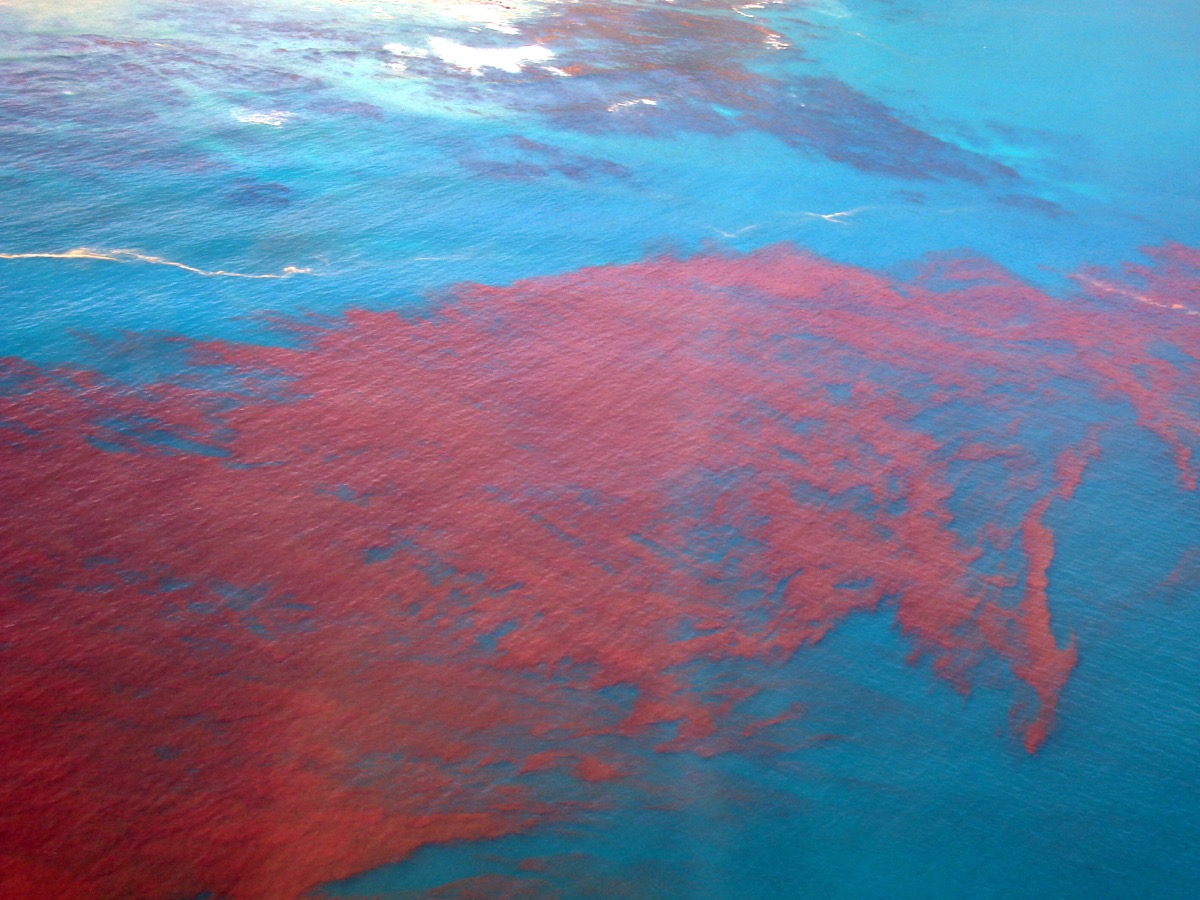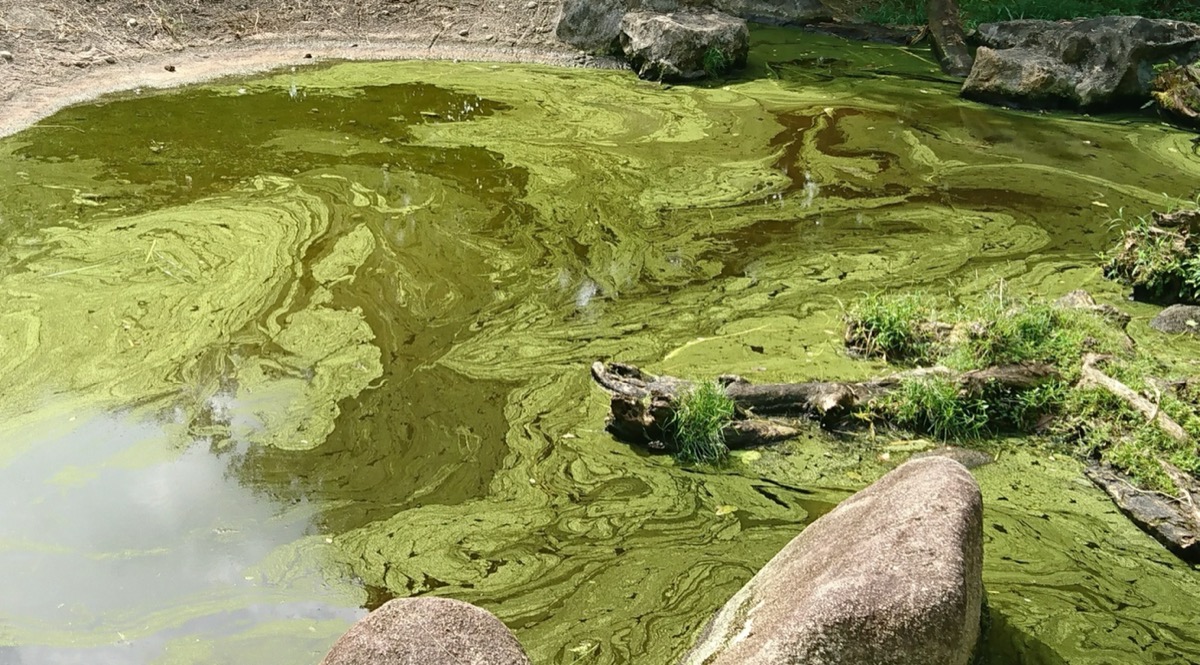If You See This Growing in the Water, Beware of Sharks, Experts Say

There are few sights that can turn a pleasant day in the water into a harrowing one like spotting a shark fin. And while shark sightings may be a relatively rare occurrence in most bodies of water, there’s one particular phenomenon that has been making these marine animals behave strangely—and, in some cases, move closer to areas where humans are present. What’s more, it’s a plant that’s prompting their surprising change of location. Read on to find out what kind of plant life could be an indicator that sharks are close behind.
RELATED: If You Live Here, Prepare for More Sharks Than You’ve Ever Seen Before.
If you see red water, watch out for sharks.

While any discoloration in the water you’re hoping to swim in might be enough to keep you out, if you can see red water in the distance, that may mean sharks are making their way closer to shore.
According to a recent report from Fox 13, the canals of Buttonwood Harbor, Florida were recently overrun with hundreds of bonnethead, lemon, and nurse sharks due to the so-called “red tide.”
“This is an unnatural thing. These sharks are not here through their own choice,” Bob Hueter, PhD, senior scientist emeritus at the MOTE Marine Laboratory & Aquarium and chief scientist for conservation nonprofit OCEARCH, explained to Fox 13. “They are there because they are seeking refuge from red tide.”
For the latest summer safety news delivered straight to your inbox, sign up for our daily newsletter!
Red algal blooms can prove fatal for certain types of marine life.

According to the Centers for Disease Control and Prevention (CDC), red tide is the result of Karenia brevis (k. brevis), a type of microscopic marine algae that grows quickly in water and which can kill certain types of marine life, including sharks.
Unfortunately, experts from MOTE Marine Laboratory explain that when too many animals seek refuge from red tides in a single area, there is often an insufficient amount of food and oxygen for all of them, and a number may die anyway.
Red tide may make humans sick, too.

It’s not just the threat of sharks that should keep you out of the water if you happen to see what might be red tide. According to the CDC, “Anecdotal evidence suggests that people who swim among brevetoxins or inhale brevetoxins dispersed in the air may experience irritation of the eyes, nose, and throat, as well as coughing, wheezing, and shortness of breath,” and there’s evidence that individuals with existing respiratory illnesses, like asthma, may experience more severe symptoms.
Anyone who eats shellfish that has fed on cytotoxic algae may also be susceptible to neurological and gastrointestinal symptoms following its consumption.
Algal blooms of all colors should be avoided.

While red algal blooms may pose a particular threat when it comes to shark encounters, food poisoning, and respiratory symptoms, if you notice a possible algal bloom in a water source you’re considering entering—either evidenced by a change in the water’s color, viscosity, or smell—don’t go in.
Cyanobacterial harmful algae blooms (cHABs), which sometimes appear blue or green, can make both humans and animals sick due to inhalation, skin contact, eye contact, and ingestion exposures, and can cause blisters in the mouth, lip swelling, nausea, vomiting, muscle weakness, joint pain, liver failure, and pneumonia, according to the CDC. It’s not possible to tell if algae in water is a cHAB simply by looking at it, so when in doubt, avoid any water that looks or smells peculiar, and make sure your pets do the same. If you have come in contact with potentially contaminated water, call your doctor or Poison Control immediately.
RELATED: If You See This at the Beach, Don’t Go in the Water, Experts Warn.